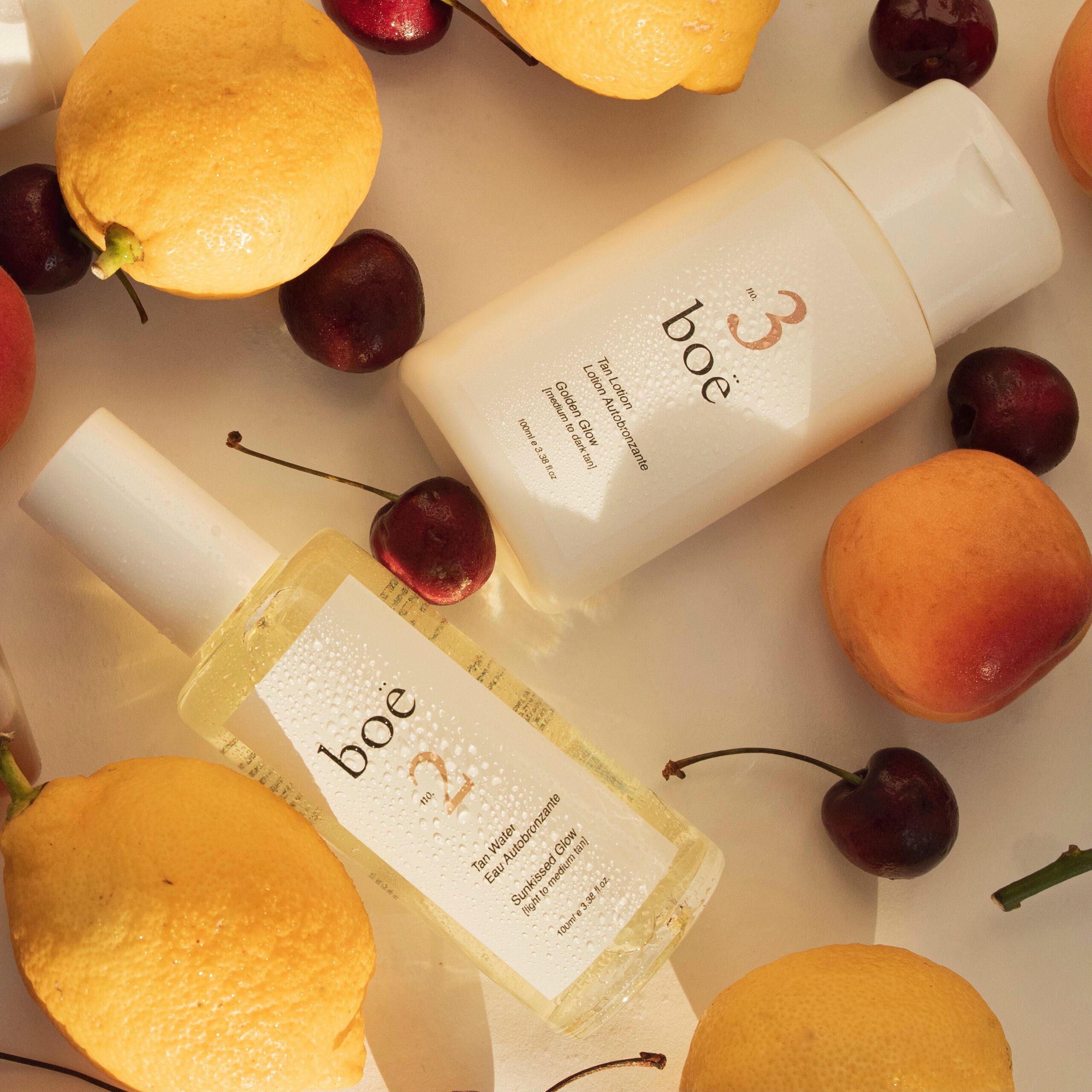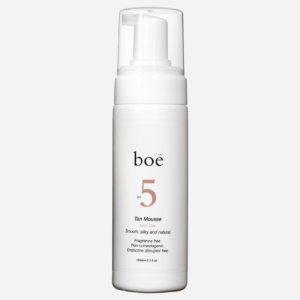Is it okay to use self tanners if you have eczema? And can you tan easily with eczema or other skin conditions?
The short answer is yes! But there are a few ground rules that dermatologists recommend. These rules are to help you avoid a flare-up when you use self tan and skin care products, while having eczema.
When you have atopic dermatitis, which is the most common type of eczema, a lot of work goes into caring for your skin. Eczema affects the skin in many ways. You may itch, skin may be dry and red, or there may be scaly patches on your body.
Even if you have your eczema under control with moisturizers and medications, you may still wonder how summer and sun exposure will affect your skin. You may also be wondering how to safely get a sun-kissed glow, no matter your skin type. And a good self-tanner is indeed one option; even when you have eczema.
Self-tanners can be a great way to get color, but your should still be aware of some drawbacks, some of which are specific to people with eczema challenges. So the next question is; how to choose the best self tanner for eczema in general?
Using Self Tanners When You Have Eczema
As someone with eczema, you might be a pro at reading labels on your skincare products. You’re not only looking for words like “gentle,” “fragrance-free,” or “designed for sensitive skin” — you’re also reading the ingredients list.
The challenges faced with self tanners can apply to a variety of personal-care products. Within these products, there are certain ingredients which are known for irritating patients with sensitive skin or atopic dermatitis. Self tanners are leave-on products, and so there may be an increased risk that the ingredients in the formula, like preservatives, will cause irritation.
The main active ingredient in Boë’s self-tanners is dihydroxyacetone (DHA), an approved additive that reacts with amino acids in the outer layer of skin to produce that sun-kissed glow, according to a review in the Journal of the American Academy of Dermatology from September 2018. There is not much data on DHA and eczema. But DHA can irritate your skin, as well as cause allergic contact dermatitis, especially in those prone to eczema – and you can also have zero side effects.

When choosing a self tanner
… know that your product most likely will contain DHA, as that’s the active ingredient that changes your skin tone. Still, you can take a few precautions, when implementing self tan into your skin care routine.
1. Look for a product that is labeled safe for sensitive skin. Products that have fewer additives (such as fragrances and preservatives, or, an overall shorter list of ingredients. Like the Boë No.1 Tan Drops, No.2 Tan Water and No.5 Tan Mousse.
As well as those that contain additional moisturizers, such as shea butter, aloe, glycerin, and vitamins E and B5 – like Boë’s No.4 Tan Maximizer or No.3 Tan Lotion. These ingredients can decrease the risk of irritation and promote a healthy skin barrier. The Boë self tan products are among the best self tan for eczema.
It is important that your skin is in its best shape prior to application. Dry skin or rough scaly patches will ‘consume’ the self-tanner resulting in blotchy and uneven areas. Before applying self tan, make sure you have been consistently moisturizing your skin to ensure an even and smooth application.
Before Trying a Self Tanner, Patch Test Your Skin
Overall, the likelihood of your skin reacting to self tanners is low. But if you have sensitive skin or have had adverse reactions to products in the past, be more careful when applying something new. Including self tanners – and do a “repeat open-use test.” Here’s how to do it:
- Apply the product (in this case, your self tanner of choice) on a one- to two-centimeter area of the skin – ideally some place that isn’t visible, i.e., arm, leg, stomach, etc.
- Repeat once or twice per day for a week.
- Watch for a reaction, such as redness or irritation.
If you react on your arm/thigh/stomach, you may have avoided a full-body flare-up. If it was well tolerated, it’s reasonable to step up application and use it on other parts of your body. There’s still no guarantee you won’t react, but it’s less likely.
YOU MIGHT BE INTERESTED IN…
When Starting to Use Self Tanners
Once you have established that there is no sensitivity, then condition your skin regularly with moisturizer, leading up to the tan application. This is especially important for eczema sufferers. Just prior to applying the tan, we recommend applying a good moisturizing cream to dry areas. Especially the areas affected by eczema, so the self tan won’t ‘sit in and dwell’ extra in those areas.
When applying the tanning product, it is best to avoid direct application to eczema-affected areas. When unaffected areas have been tanned, use a blender brush or back of a velvet tanning mitt to glaze over the problem area. This will help blend in the tan and prevent dry areas from absorbing too much product, which can produce darker patches. Post treatment, you should continue to moisturise regularly to hydrate and prolong your new glow.
One Last Thing on Using a Self Tanner When You Have Eczema
In general, self tanning products are not a replacement for sunscreen with SPF. In other words, that faux tan won’t guard your skin from the harmful UV and UVB-rays from the sun. To guard from the harmful rays, the Skin Cancer Foundation and Societies are recommending to use SPF 30.
For your face, No.13 Face Cream SPF 30 with Self Tan comes in especially handy. It’ll act both as a moisturizing face cream, sunscreen with SPF 30-protection, and self tanner! At the same time, it’s non-comedogenic, so it won’t clog your pores. All of our sunscreen-products are also mineral sunscreens that lets your skin breathe. They leave no white cast or fluff. They are endocrine disruptor free, and blends seamlessly into your skin without interfering with your potential post make-up routine
Ideally, you should reapply your sunscreen every two hours if you’re outdoors, or after you swim or sweat – with our No.12 Face Cream SPF 30 – that’ll be easily done. Doing so, can help reduce your risk of skin cancer, as well as slow signs of skin aging. This is i.e., the development of wrinkles, discolorations and sagging, and increases skin cancer risk.
SPF is important for everyone, but people with eczema may have an additional reason to use SPF: Eczema may make your skin more vulnerable to the effects of the sun.
Overall, plan to continue to use sunscreen regularly when you’re outside in the summer and year-round. SPF can and should be applied on top of a fake tan.







